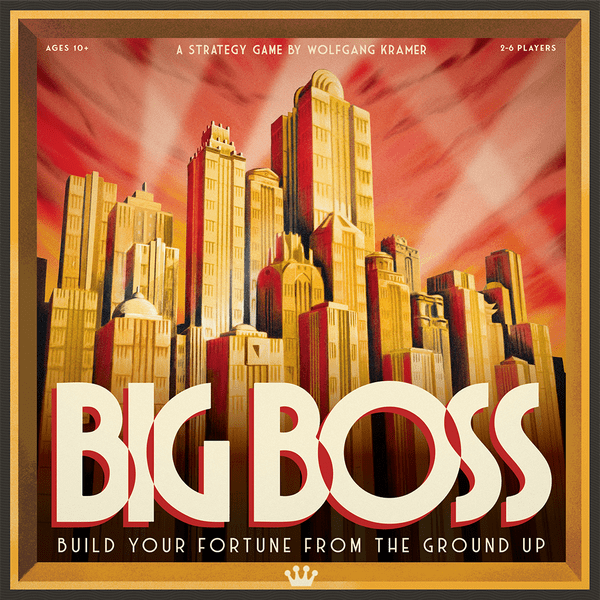Big Boss (1994) Board Game
Big Boss is a classic board game that was released in in 1994. Designed by Wolfgang Kramer and illustrated by Franz Vohwinkel, this game falls under the Economic and Industry/Manufacturing category. With a runtime of 90 minutes and suitable for players aged 10 and above, Big Boss has been a favorite among board game enthusiasts for many years.
Game Components of Big Boss
How To Setup Big Boss
To set up the game, each player starts with a hand of industry cards and $40 million. The board is placed in the center, and the industry cards are laid out face-up for players to purchase. Each player’s goal is to use these cards to found and expand companies on the board.
Gameplay Mechanics and Game Objective
Player Experience
Playing *Big Boss* is a dynamic and strategic experience. Players must balance founding new companies, expanding existing ones, and managing mergers to maximize their wealth. Unlike *Acquire*, *Big Boss* encourages a diverse portfolio, as players benefit financially from every company expansion, regardless of their share ownership. The game’s three-dimensional building mechanic and art-deco aesthetic add to its visual appeal and engaging gameplay.
Pros
Cons
Personal Thoughts on Big Boss
*Big Boss* is ideal for fans of economic and strategic board games, particularly those who enjoy games like *Acquire*. It offers a unique blend of company management, mergers, and share trading that keeps players engaged throughout. The game’s design and mechanics make it accessible to both new and experienced players, making it a great addition to any board game collection. If you enjoy fast-paced, financially driven gameplay with a touch of classic elegance, *Big Boss* is certainly worth checking out.
We are supported by our audience. When you purchase through links on our site, we may earn an affiliate commission, at no extra cost for you. Learn more.

